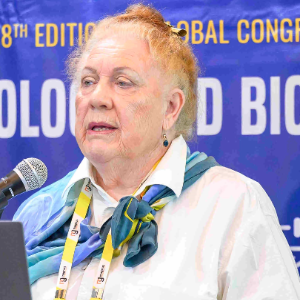Plant Evolution and Systematics
Plant evolution and systematics stand as integral branches of botany, illuminating the captivating saga of plant life's journey on Earth and facilitating the classification of the diverse array of plant species that grace our planet. This narrative of botanical evolution unfolds over millions of years, beginning with the humble emergence of algae and progressing through the evolutionary milestones of mosses, ferns, gymnosperms, and culminating in the dazzling diversity of flowering plants, or angiosperms, that now reign supreme in our ecosystems. Throughout this epic odyssey, plants have navigated a labyrinth of environmental challenges, sculpting their adaptations through the relentless forces of natural selection. These adaptive responses have engendered the breathtaking diversity witnessed in modern flora, showcasing nature's boundless creativity and resilience. Complementing the narrative of plant evolution, systematics serves as the meticulous custodian tasked with classifying and organizing this vast botanical tapestry. Plant taxonomists, armed with an arsenal of morphological, anatomical, molecular, and genetic data, endeavor to unravel the intricate relationships between plant species. Through meticulous analyses, they categorize plants into hierarchical groupings, such as families, genera, and species, providing a roadmap for understanding the complexities of plant diversity. Advancements in DNA sequencing technologies have heralded a new era in plant systematics, revolutionizing our understanding of plant relationships and evolutionary histories. By harnessing the power of molecular data, scientists can reconstruct accurate phylogenies, shedding light on the evolutionary trajectories of plant lineages with unprecedented precision. These phylogenetic insights not only enrich our understanding of plant evolution but also wield profound implications for conservation efforts, resource management, and the development of sustainable agricultural practices. Armed with a deeper understanding of plant relationships, conservationists can formulate targeted strategies for preserving biodiversity hotspots, while farmers can harness knowledge of plant phylogenies to optimize crop breeding programs and enhance agricultural productivity. As we unravel the intricate tapestry of plant evolution and refine our systematic classifications, we glean insights crucial for fostering the sustainable coexistence of humanity and the plant kingdom. By embracing the lessons woven into the fabric of botanical history, we chart a course towards a harmonious future where the wondrous diversity of plant life flourishes alongside our own endeavors.

Mohammad Babadoost
University of Illinois, United States
Mary Cole
The University of Melbourne, Australia
Edgar Omar Rueda Puente
Universidad de Sonora, Mexico
P E Rajasekharan
ICAR-IIHR, India
Rameshkumar K B
Jawaharlal Nehru Tropical Botanic Garden and Research Institute, India
Selina Sterup Moore
Aarhus University, Denmark


Title : Exploring the genetic diversity in tannin-rich forages to explain the large intra species variability in tannin content
Selina Sterup Moore, Aarhus University, Denmark
Title : Isolation and functional properties of biomolecules of plants and its application
Balagopalan Unni, GEMS Arts & Science College (Autonomous), India
Title : Primed for the future: PGPR and the promise of sustainable, heritable crop resilience
Prashant Singh, Banaras Hindu University (BHU), India
Title : Revealing allelic variations in candidate genes associated with grain yield under salinity stress between two contrasting rice genotypes
Nisha Sulari Kottearachchi, Wayamba University of Sri Lanka, Sri Lanka
Title : Adaptive strategies of Aristida L. species across ecological zones of Pakistan: Linking soil characteristics with morphological and physiological traits
Iram Ijaz, University of Agriculture Faisalabad Pakistan, Pakistan
Title : Ethnobotanical survey and abundance of weeds in selected Manihot esculenta (cassava) Crantz farms in Osun state, Nigeria
Dada Caleb Mayokun, University of Ibadan, Nigeria